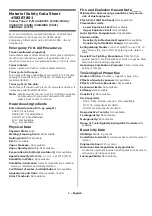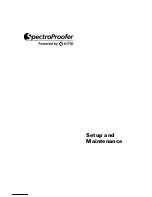
B.3. Special Paper
B-8
Envelopes
The printer can print on envelopes using paper with a basis weight of 60 to 79 g/m² (16 to 21
lbs/ream). Envelopes must be manually fed.
An envelope is a more complex object than a single sheet of paper. For this reason, it may
not be possible to obtain consistent printing quality over the entire envelope surface.
Many envelopes have a diagonal grain orientation. This orientation is more likely to wrin-
kle and crease on its way through the printer. Before purchasing envelopes for use with the
printer, test a sample to verify the envelope's suitability.
Do not use envelopes having an encapsulated liquid adhesive.
Avoid long printing runs consisting of envelopes only. Extensive envelope printing can
cause premature printer wear.
To avoid jamming due to curled envelopes, do not leave more than approximately 10 printed
envelopes stacked in the paper trays during multiple printing of the envelopes.
Colored Paper
Colored paper should satisfy the same conditions as white bond paper, listed in Table B.1.
In addition, the pigments used in the paper must be able to withstand the heat of fusing dur-
ing the printing process (up to 200°C or 392°F).
Preprinted Paper
Preprinted paper should have a bond paper base. The preprinted ink must be able to with-
stand the heat of fusing during the printing process, and must not be affected by silicone oil.
Do not use paper with any kind of surface treatment, such as the type of paper commonly
used for calendars.
Recycled Paper
Select recycled paper that meets the same specifications as the white bond paper (See
Table
B.1
on
page B-2
.) except whiteness.
☛
Before purchasing recycled paper, test a sample on the printer and check that print-
ing quality is satisfactory.
















































